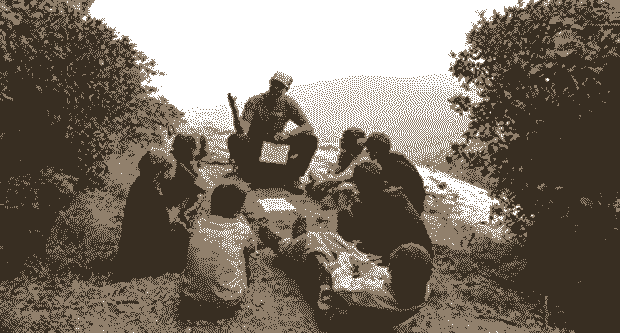Question: What are the benefits of outdoor education?
Outdoor education, often referred to as experiential learning, encompasses a range of educational activities conducted outside traditional classroom settings. This approach offers a dynamic and immersive learning environment that promotes critical thinking, problem-solving, and environmental awareness. By engaging with nature and real-world scenarios, students can develop a deeper understanding of academic concepts and essential life skills. This article explores the numerous benefits of outdoor education and its impact on students’ overall development.
Enhancing Critical Thinking and Problem-Solving Skills
Real-World Applications
Outdoor education provides students with opportunities to apply classroom knowledge to real-world situations. For example, a biology lesson on ecosystems becomes more tangible when students explore a local forest or wetland. This hands-on approach encourages critical thinking as students observe, hypothesize, and experiment in a natural setting.
Example: During a field trip to a local stream, students might study water quality by testing for pollutants. They learn to analyze data, draw conclusions, and propose solutions to environmental issues, enhancing their problem-solving abilities.
Unpredictable Challenges
The natural environment presents unpredictable challenges that require students to think on their feet. Whether navigating a hiking trail, building a shelter, or identifying plant species, these activities demand quick thinking and adaptability.
Example: A group of students on a camping trip might encounter unexpected weather changes, prompting them to devise strategies to stay dry and warm. This scenario fosters teamwork, decision-making, and practical problem-solving skills.
Promoting Environmental Awareness
Connection to Nature
Outdoor education fosters a deep connection to nature, instilling a sense of responsibility and stewardship for the environment. When students spend time outdoors, they develop an appreciation for the natural world and an understanding of the importance of conservation.
Example: A school gardening project allows students to observe plant growth, learn about sustainable agriculture, and understand the role of pollinators. This hands-on experience encourages them to make environmentally conscious choices in their daily lives.
Understanding Environmental Issues
By exploring local ecosystems and studying environmental issues firsthand, students gain a better understanding of the impact of human activities on the planet. This knowledge empowers them to become advocates for sustainable practices and environmental protection.
Example: Visiting a nearby wildlife reserve to study endangered species helps students learn about habitat destruction and conservation efforts. They can then apply this knowledge to projects that raise awareness and promote environmental sustainability in their communities.
Developing Social and Emotional Skills
Teamwork and Collaboration
Outdoor education often involves group activities that require teamwork and collaboration. Whether it’s setting up a campsite, completing a ropes course, or conducting a field study, these experiences teach students how to work together, communicate effectively, and support one another.
Example: Participating in a group hike challenges students to navigate together, share responsibilities, and encourage each other. This collaborative effort builds trust, cooperation, and leadership skills.
Building Resilience and Confidence
Experiential learning in the outdoors helps students build resilience and confidence by pushing them out of their comfort zones. Overcoming physical and mental challenges in a supportive environment boosts self-esteem and fosters a growth mindset.
Example: A rock climbing activity might initially intimidate students, but with guidance and encouragement, they learn to trust their abilities and persevere. Successfully reaching the top instills a sense of accomplishment and confidence.
Enhancing Physical Health and Well-Being
Physical Activity
Outdoor education promotes physical health by incorporating movement and exercise into the learning process. Activities such as hiking, swimming, and nature walks provide a break from sedentary classroom routines and encourage a healthy, active lifestyle.
Example: A physical education class held in a park allows students to engage in various activities like running, playing sports, and practicing yoga. These exercises improve cardiovascular health, strength, and flexibility.
Mental Health Benefits
Spending time outdoors has proven mental health benefits, including reduced stress, improved mood, and increased attention span. Nature’s calming effect helps students relax and recharge, enhancing their overall well-being.
Example: A mindfulness session held in a natural setting can help students practice deep breathing, meditation, and reflection. This practice reduces anxiety and promotes emotional balance.
Fostering Creativity and Imagination
Open-Ended Exploration
The natural world is a rich source of inspiration, encouraging creativity and imagination. Outdoor education provides opportunities for open-ended exploration, where students can investigate, experiment, and create without the constraints of a structured classroom environment.
Example: An art class conducted in a botanical garden allows students to draw inspiration from the surrounding flora and fauna. They can sketch, paint, or sculpt using natural materials, fostering creativity and artistic expression.
Hands-On Learning
Experiential learning through hands-on activities stimulates curiosity and innovation. Students are encouraged to think outside the box and develop creative solutions to challenges they encounter in the natural world.
Example: A science project involving the construction of a simple solar oven encourages students to experiment with different designs and materials. This hands-on activity teaches them about renewable energy while promoting creativity and critical thinking.
Integrating Outdoor Education into the Curriculum
Cross-Disciplinary Learning
Outdoor education can be integrated into various subjects, providing a holistic learning experience. Subjects like science, geography, history, and art can all benefit from outdoor exploration and experiential learning.
Example: A history lesson on local indigenous cultures can be enriched by visiting historical sites, participating in traditional crafts, and learning about native plants and their uses. This interdisciplinary approach deepens understanding and engagement.
Project-Based Learning
Project-based learning (PBL) is an effective way to incorporate outdoor education into the curriculum. PBL involves students working on extended projects that require research, collaboration, and practical application of knowledge.
Example: A PBL initiative focused on designing a sustainable school garden involves students in planning, planting, and maintaining the garden. This project integrates science, math, and environmental education, providing a comprehensive learning experience.
Conclusion
Outdoor education offers a myriad of benefits that extend beyond the traditional classroom. By promoting critical thinking, problem-solving, and environmental awareness, it prepares students for the challenges of the future. The immersive and hands-on nature of outdoor learning enhances social and emotional skills, physical health, and overall well-being. As educators continue to recognize the value of experiential learning, integrating outdoor education into the curriculum can create a more engaging, effective, and holistic educational experience. Embracing the outdoors as a dynamic learning environment not only enriches students’ academic journey but also fosters a lifelong connection to nature and a commitment to environmental stewardship.



